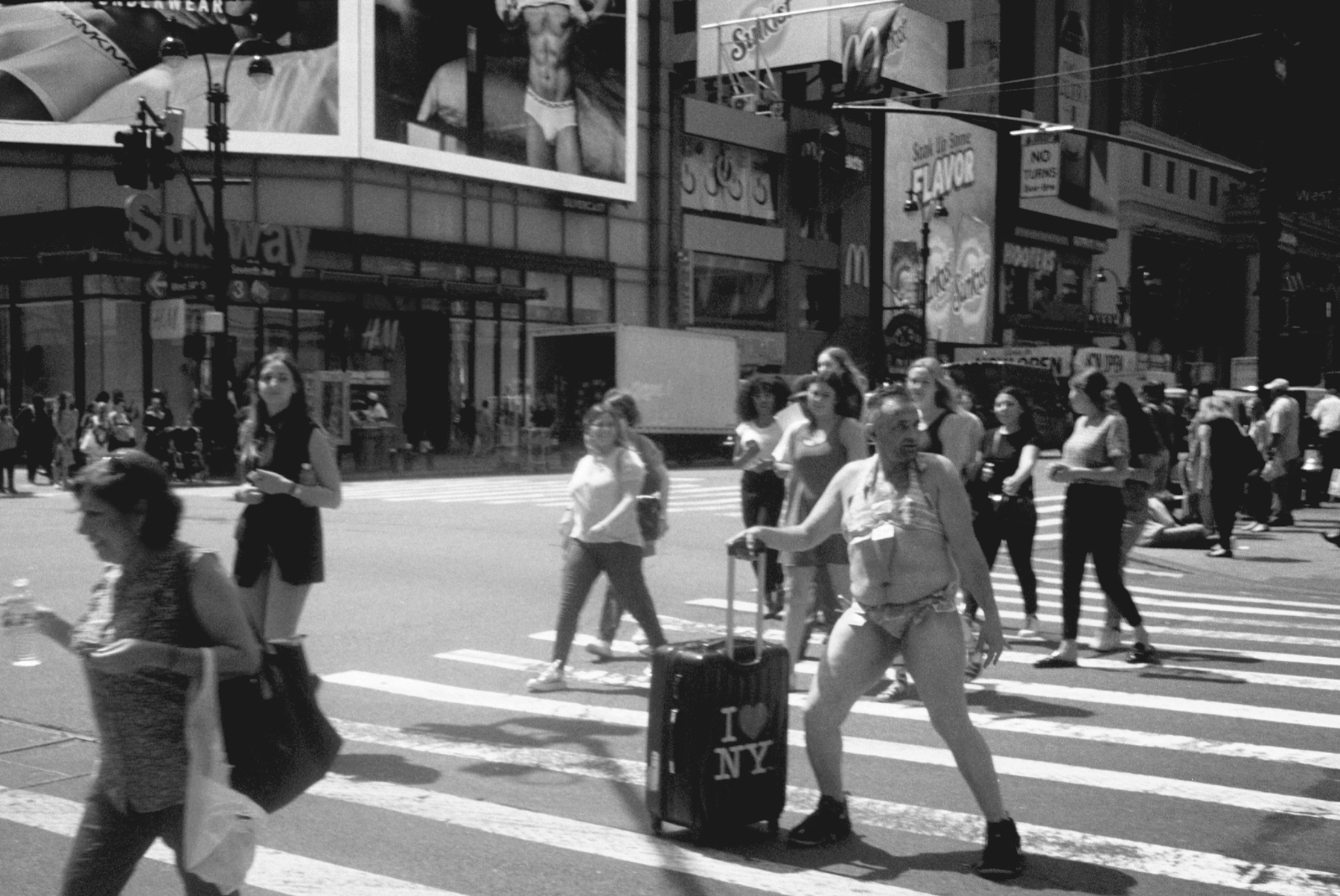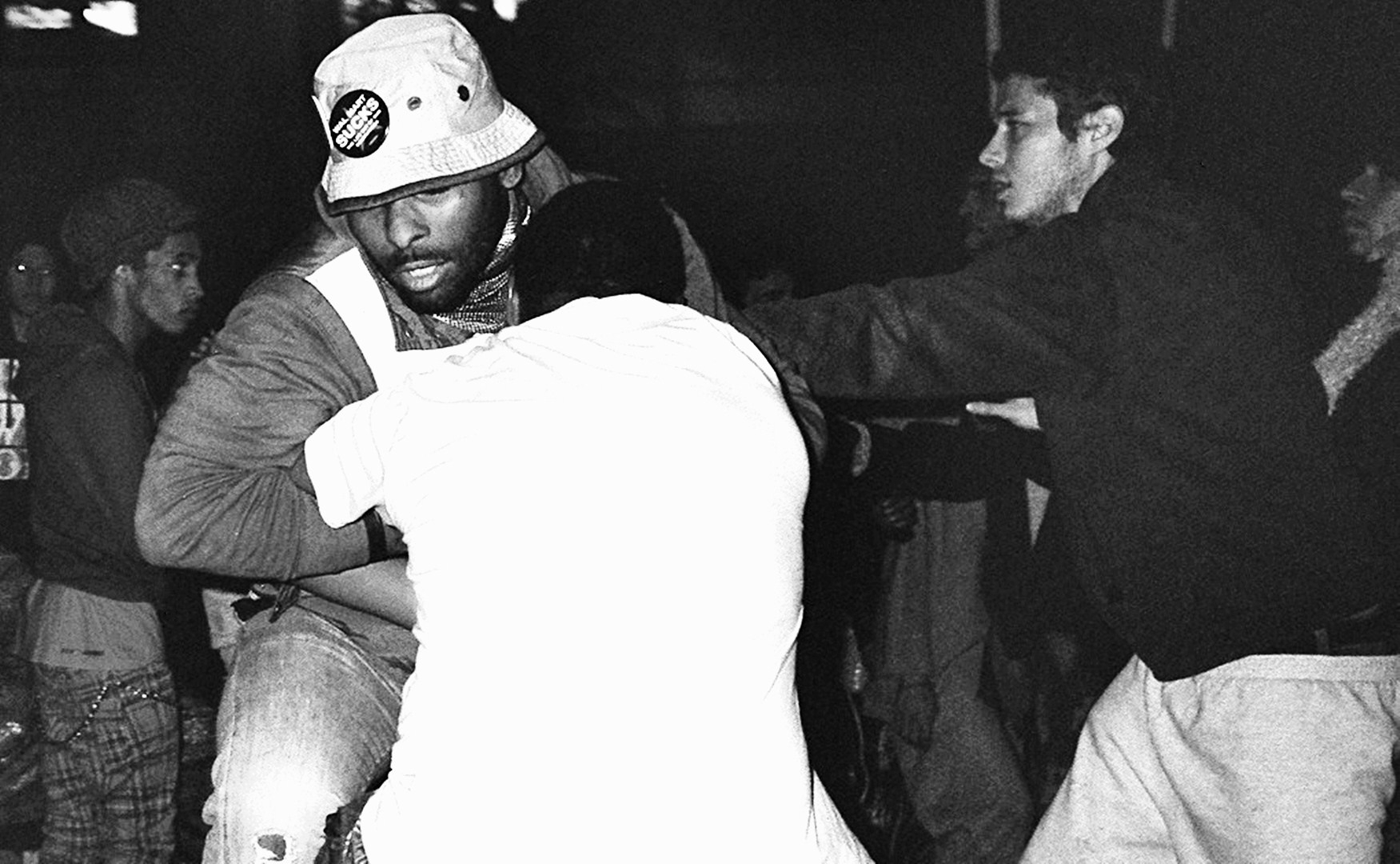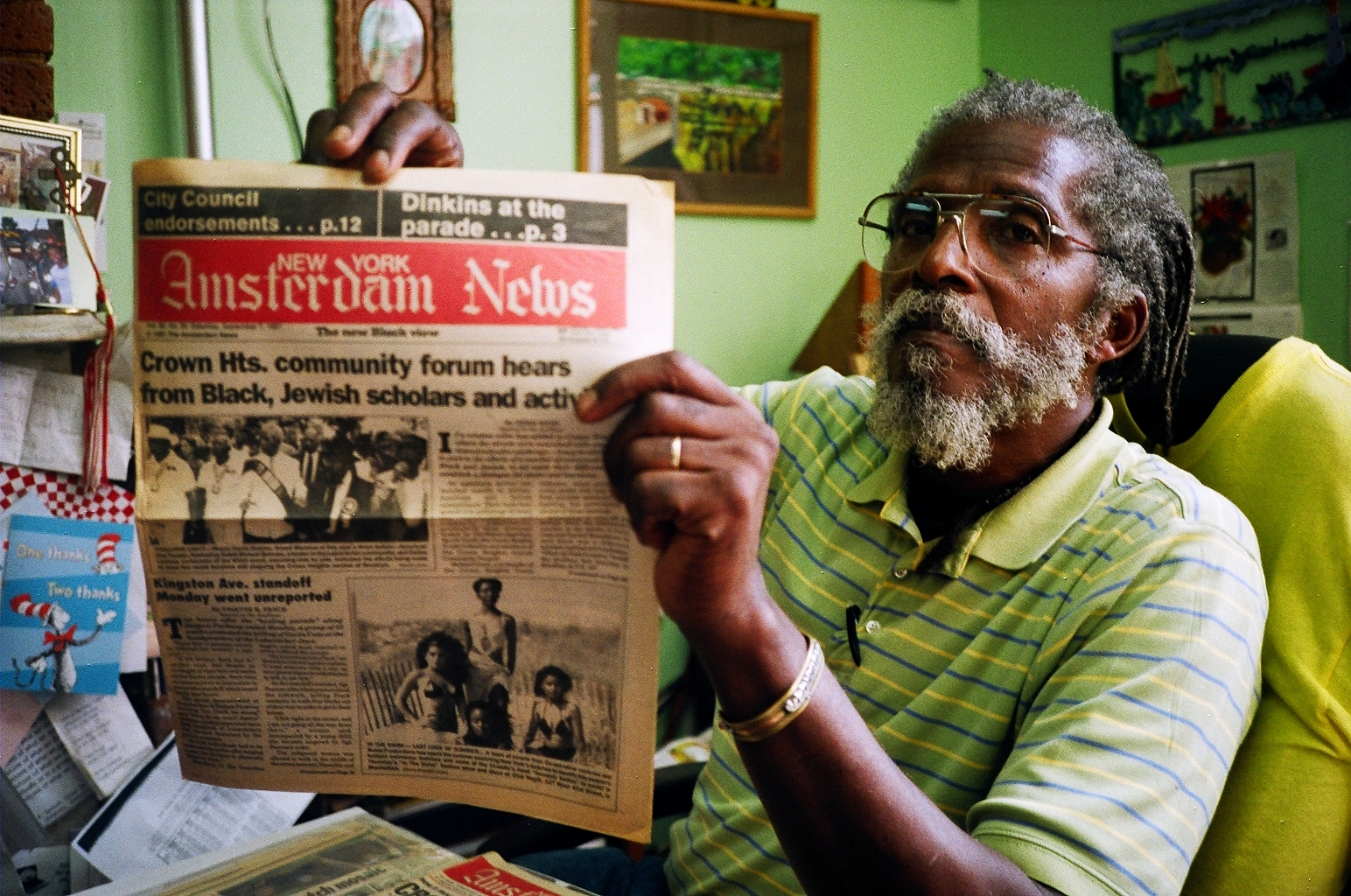Shaun La is a film photographer based in New York. He shoots street, photojournalism, fashion, editorial and portrait work. He is dedicated to the craft of film photography and is passionate about the history of photography. An interview with Shaun is featured below.
Tell us a bit about yourself Shaun. How and when did you get started in film photography?
My first steps into photography started when I was around 17 or 18 years old. The camera was a casual interest for me. I happened to see
a disposable film camera in my house and picked it up. I aimed and pressed the shutter. Now, I do remember seeing disposable film cameras when I was a pre-teen; picking them up, realizing how basic they looked to me, how light that they were in weight. However,
something more curious came across my mind when I lifted up a camera at the age of 17 in comparison to picking them up and looking at
them as a pre-teen. I would do some photography of anything I found interesting; family, the pets, objects, take the disposable camera to Rite Aid, which did not have a wet lab, wait for about a week, then go and pick up my processed and developed film and photographic prints.
Singer, Actress & Model: Ana Hoffman. Photographed on 135 film. Minolta XG
A Moment in the Streets. Midtown Manhattan. Photographed on 135 (35mm) film. Konica C35
That's a beautiful experience and way to say that, to "see life" through the camera. Do you think that when you
know you are recording a moment that it changes how you see things? Would you see/experience a scene the
same way if you were photographing it vs not?
It can and it cannot change how I see things, there is a duality for me and photography. For example, if I photograph someone smiling and I have a print in my hand of their bright, warm smile one minute and then the next minute they are frowning while standing right next to me. I cannot look at them and say you should be smiling, because this photographic moment has you smiling and it defines your life, so smile! A photographic moment is an absolute vision to the specific time in life when it was photographed, after this, the flexible and fluid flows through, life has to continue. Photography stagnates, but it does not completely define the outcome.
Model, Shakara. Photographed on medium-format film, 120. Mamiya RB67
I would not see a scene the same way as before if I had photographed it, because there is a visual connection with it, I am more educated about that experience and scene; however, I am mentally photographing every day, whether I have or have not photographed moments of a person, place or thing. Yet, if I have physically photographed there before, the moment and its visual connection stays with me. I do agree with Peter Henry Emerson's 19th century doctrine on seeing photographically, which would be the visual accuracy of a photograph being able to reproduce sight and the moment. Also, I agree with Hermann von Helmholtz's theory on the power of visual accuracy. Peter learned his concept of vision, through the readings of Hermann. Now I am not saying this is the only way to look at photography, as a photographer or an onlooker, and this would not be the only doctrine of photographically seeing that I agree with, just sharing how I comprehend visual accuracy as an educational parameter for myself as a photographer, scientifically. The visual connection I cannot completely explain, because it is a feeling that I meet halfway while I am photographing and it is an encouraging experience that always has me looking and seeing as a photographer.
A Moment in the Streets. Brooklyn, New York. Photographed on 135 film (35mm). Minolta Hi-Matic
Let's talk about "visual accuracy" for a moment. How important is truth in photography to you and, what is
truth?
When it comes to the photograph being truthful, I am a believer in this visual ingredient and I interpret truthfulness in photography as a visual reproduction of a person, place or thing. When Peter Henry Emerson was pushing forward the visual accuracy in photography, he was counter-punching the impact of Pictorialism and a painter's influence on a photograph. I think that a photograph should be a photograph. Notice, I did not say look like one, but that it should be one. Aesthetically, a photograph from Ansel Adams and a photograph from Frederick Sommer are completely opposing of one another, technical wise. However, the platform of technique is where they both can stand on top of. This would be the truth of technique and to be specific, a photographic technique. Of course, a photograph can lie and this is where the reality part of photography plays an important part of reading a photograph. To be visually accurate means that it is a photograph of something. I do not think that photography is old enough to properly handle the influence from any other medium, because if we as photographers do not have an understanding of what a photograph should be, other mediums will leave an impression on photography and then these new definitions will take over and in a sense, they won't be new definitions, but controlling definitions that came from other mediums.
A Moment in the Streets. Downtown Manhattan. Photographed on 135 (35mm) film. Minolta Hi-Matic
A war photograph will be truthful in showing the destruction that a hot war can cause, but would this same war photograph be a reality for someone vacationing in the South of France, sipping wine on a beautiful beach, running, diving and swimming in clean, clear water? When I am photographing in the streets or in a studio, the truth of the moment comes through both aspects of my photographing, but if I do a session with someone who has a makeup artist, a hair stylist, a wardrobe stylist and we are going with a concept, do these photographs lie, because the sitter does not walk around with a glam squad everywhere they go? No, our photographs would not be a lie, because there is a truth with the sitter being alive, preparing to be photogenic. Now, it may not be a reality, because once the sitter steps out of the studio, they can go back to their life which is away from being in front of my lens. This is what is so enthralling about photography; it is conduit of truths, realities, lies, fantasies and all of this is visually based on the dynamics of seeing as a photographer.
Editorial/Photography Session. Medium-format film. Mamiya RB67
What is the essence of photography to you and where do you find value in it?
The essence for me in photography would be to see the moment. If this moment happens to be artistic, documenting, entertaining, journalistic, abstract, surreal, personal, commercial or any other entity that can be observed through photography, all of which are important but ancillary when compared to the effort that is required to look and see.
A Moment Underground. Photographed on 135 (35mm) film. Minolta Hi-Matic
There is a monumental value in just being able to see something for yourself. Even when you place this monumental value next to the artistic values that can be judged in a photograph, you could be the greatest living artsy photographer in the world, but if you happen to reject comprehending and appreciating the monumental abilities in being able to see for yourself, you will truly be stagnating yourself. Also, when I mention comprehending and appreciating, it does not stop at my own photography either. The essence and value for me as a photographer being extensively involved with photography as a collective would be to look and see photography beyond my own. Collectively, I have to look and see for myself all of the photography that is tied to the history of this medium, what photographers are doing right now as well as have an opinion on the future of this visual medium. If I applied anything less to photography, I would be devaluing my own visual potential, diluting the essence of this medium into a watered down glance.
Newspaper vendor. Brooklyn, New York. Photographed on 135 film (35mm). Minolta Hi-Matic
What advice would you give to others if they asked your for tips on how to "see". Other general tips?
Keep your mind clear. When you look at something, let your mind speak to you first and at the same time, have a tolerance of how other people might see the same thing that you have observed. For me, seeing does not have anything to do with being correct or incorrect. It has to do with knowing that you are able to read beyond words and merge into the moments in photography. Once your mind is at a level of having a visual confidence, your sight will have you capable of being visually strong while becoming a photographer, a painter, a sculptor or an illustrator and any other position where you have to lead yourself. To see is to be able to challenge yourself, learn about the many moments in life that are visible.
Apply this to photography we have two halves. Once you are able to see, pay attention and aim. At times, you have to think about it, other times you won't have the time to think about it; however, you are seeing and this is what brings your photographic eye into a visual environment where you are able to participate as a photographer. The other halve to this would be, do not come down too hard on yourself when you miss the moment. Seeing has to be a progressive tactic for the photographer. If you miss the moment, just encourage yourself that a new moment will be all yours in that viewfinder. It won't be the past moment that you missed, it will be something better.
Artist Rossana Russo. Photographed on medium-format film, 120. Mamiya RB67
Why do you choose to shoot film?
Film is a natural reaction for me and starting off with film has allowed me to stay in a visual place where I am completely satisfied with working on film only. Staying with something is just the loyal side of me. I am a vegetarian, I prefer physical copies of books and newspapers. In some way, perhaps there is an "old soul" sense within my behavior. I just say that I know what I like and when I have that attachment, I am going to bond with the experience or process.
Film is something that welcomes a day into my planning. I have to go pick up the film, make eye contact, share conversations. The conversations that have come my way when I am at B&H and another customer or employee asks me about one of my film cameras or the kind of film that I am using, are connections which film has introduced me to. Then to process and develop, this is a whole other conclusion that involves the entire adventure of going to go and get my film, loading it up, seeing and photographing, all involving the public and then to be standing in front of my film tank, processing and developing film is a moment for my own education of learning about life through physically handling my rolls of film. Choosing film for me has to be one of the greatest shapes of self-actualization.
Any closing thoughts you'd like to share?
Photography is worth learning about, even if you are not a photographer. I truly hope that one day, we will be able to talk about photography like we talk about paintings, politics, relationships and life. I want photography to be a serious medium that is appreciated by society and even if you are not serious about photography, you are able to understand that you can still learn about this medium. I am not a politician but I read the politics section in the newspaper, daily.
Mr. Richard Green. Community activist and founder of Crown Heights Youth Collective, Brooklyn, New York. Photographed on 135 film.










